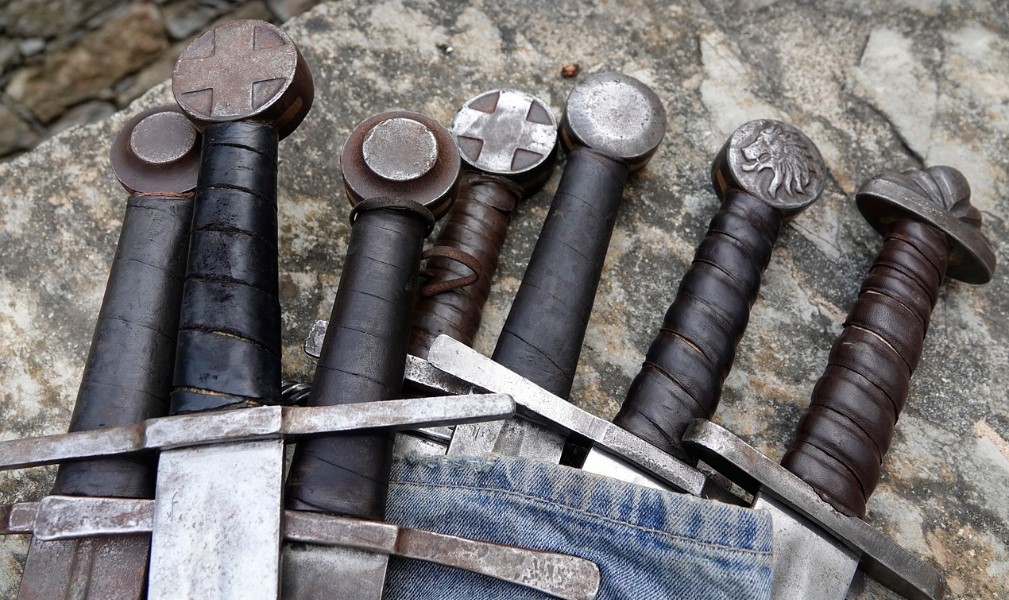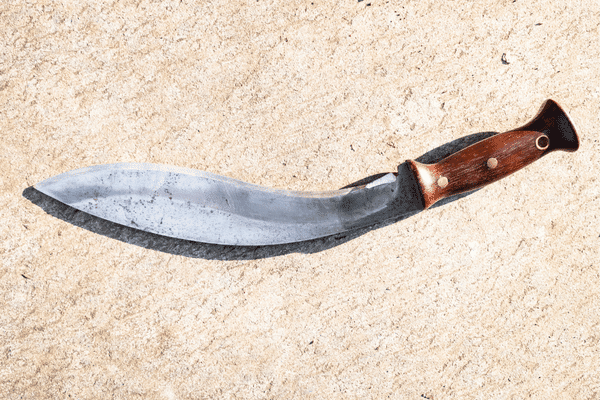Chopping Through Confusion: Hatchets vs. Tomahawks.
Anatomy of a Chop: Key Differences
At first glance, hatchets and tomahawks might seem like twins separated at birth. However, closer inspection reveals subtle, yet significant, differences in their anatomy:
- Hatchet: Typically has a curved blade with a pronounced "beard" near the handle. This design excels at splitting wood and driving nails.
- Tomahawk: Often boasts a straighter blade and a smaller beard or none at all. This geometry favors chopping and throwing, making it versatile for various tasks.
Handle:
- Hatchet: Usually features a curved or straight handle that curves slightly into the head for improved swing control and splitting power.
- Tomahawk: Typically has a straight handle, sometimes with a pronounced curve near the head, offering balanced throwing capability and flexibility for diverse tasks.
Head Weight:
- Hatchet: Generally, a hatchet has a heavier head, ranging from 1 to 2.5 pounds, ideal for delivering powerful chops and splitting even stubborn logs.
- Tomahawk: Often boasts a lighter head, typically between 1 and 1.5 pounds, facilitating swift swings, chopping smaller branches, and, in some cases, throwing.
Material:
- Both: Both hatchets and tomahawks are typically made from durable steel, although some models feature fiberglass or composite handles for weight reduction.
History and Heritage:
- Hatchet: Has a more universal history, used for woodworking and everyday tasks for centuries across various cultures.
- Tomahawk: Rooted in Native American traditions, originally adopted by Europeans for its dual combat and utility purposes.
Choosing Your Champion: What's Right for You?
Now that you understand the key differences, choosing between a Hatchet and a Tomahawk boils down to your needs:
Camp Chopping:
- Hatchet: The heavier head is ideal for splitting kindling and firewood effortlessly.
- Tomahawk: The lighter weight and straighter blade offer flexibility for chopping smaller branches and clearing brush.
Backpack Companion:
- Tomahawk: The lighter weight and compact size make it easier to carry on hikes and camping trips.
- Hatchet: Some lightweight hatchet models with fiberglass handles can be viable options for backpack portability.
Bushcraft and Survival:
- Tomahawk: The versatility and potential for throwing (in some models) make it a multi-purpose tool for various tasks.
- Hatchet: The superior splitting power might be crucial for building shelters or preparing firewood in survival situations.
Historical Reenactments:
- Tomahawk: For specific historical contexts, choosing a tomahawk with authentic design elements is crucial.
- Hatchet: Some historical-style hatchets can also be suitable, depending on the period and region being reenacted.
Frequently Asked Questions:
Q: Can I use a hatchet as a tomahawk?
While both can chop, the weight and design differences might not make a hatchet ideal for throwing or certain tomahawk-specific tasks.
Q: Which one is better for self-defense?
Neither tool should be considered a primary self-defense weapon. However, some tomahawks designed for throwing might offer a deterrent element in specific situations.
Q: Can I use a tomahawk as a hatchet?
A tomahawk can handle many chopping tasks, but its lighter head might struggle with large logs or dense wood compared to a dedicated hatchet.
Conclusion
Hatchets and Tomahawk Ax are both fantastic tools, each with unique strengths and weaknesses. Understanding their differences and aligning them with your needs will ensure you wield the perfect champion for your next chopping adventure. So, whether you're clearing campgrounds, carving dreams into wood, or exploring the legacy of these iconic tools, remember, the right chop starts with the right choice.





Comments
Post a Comment